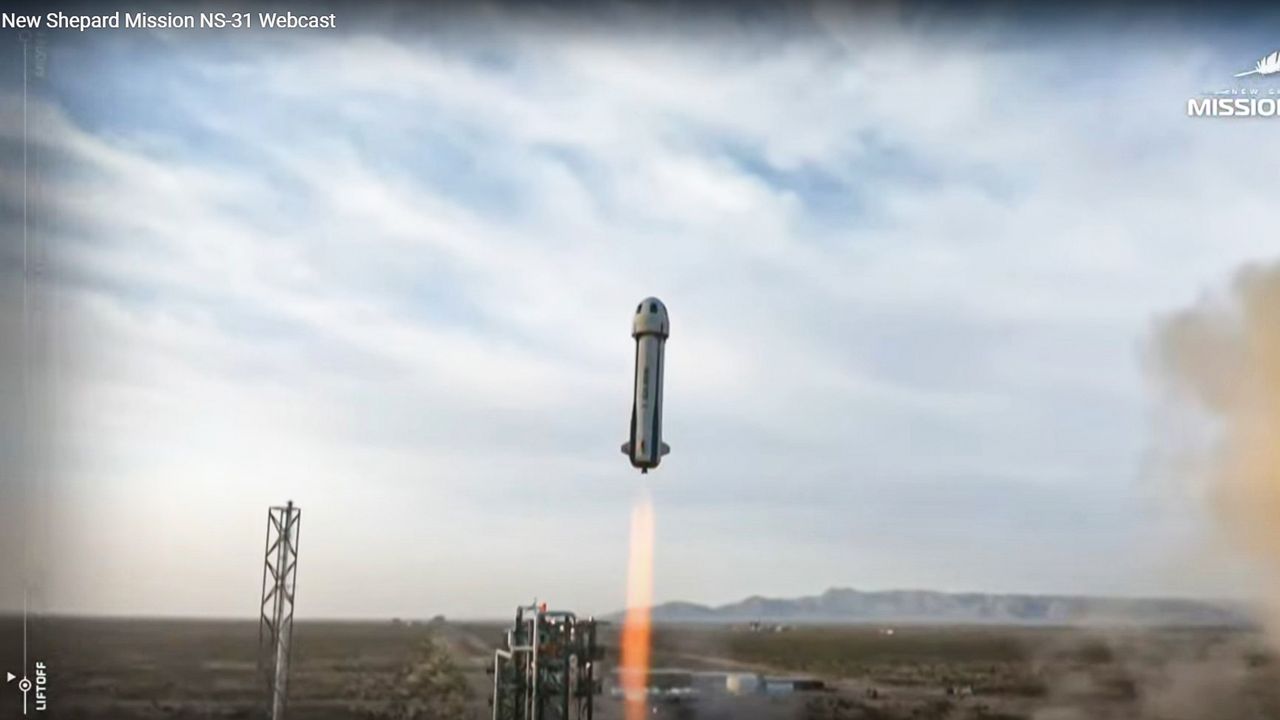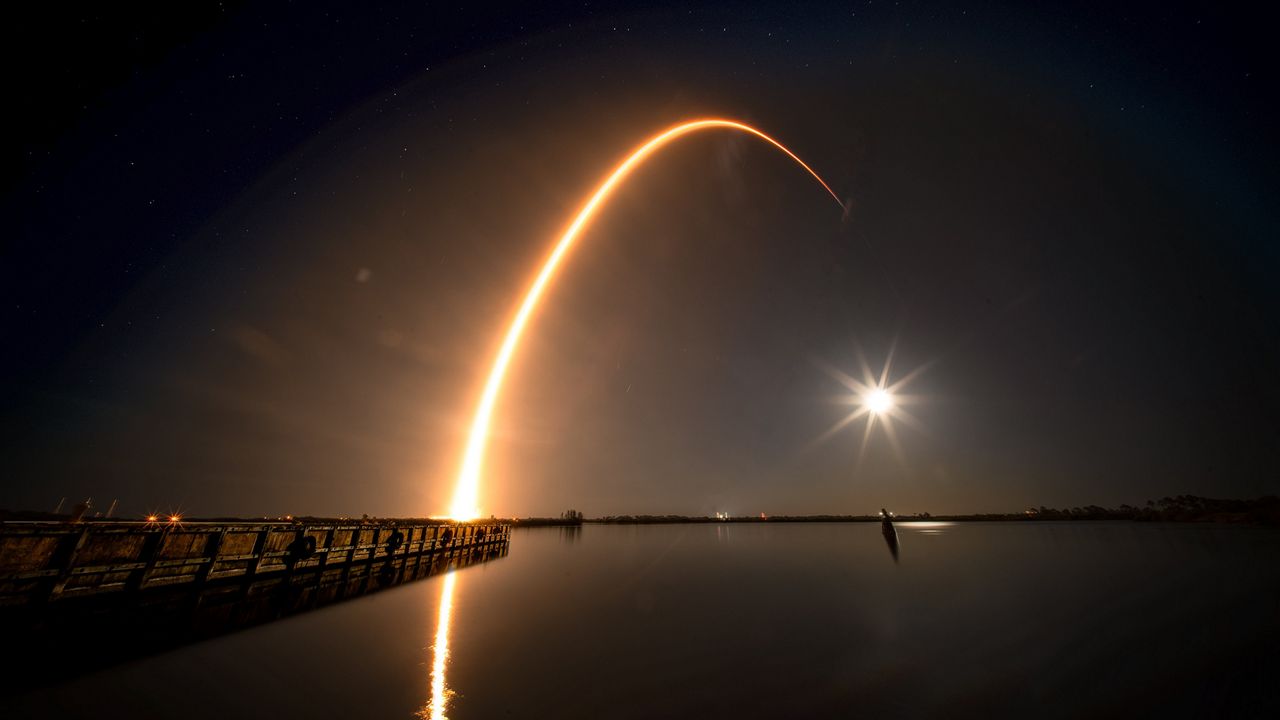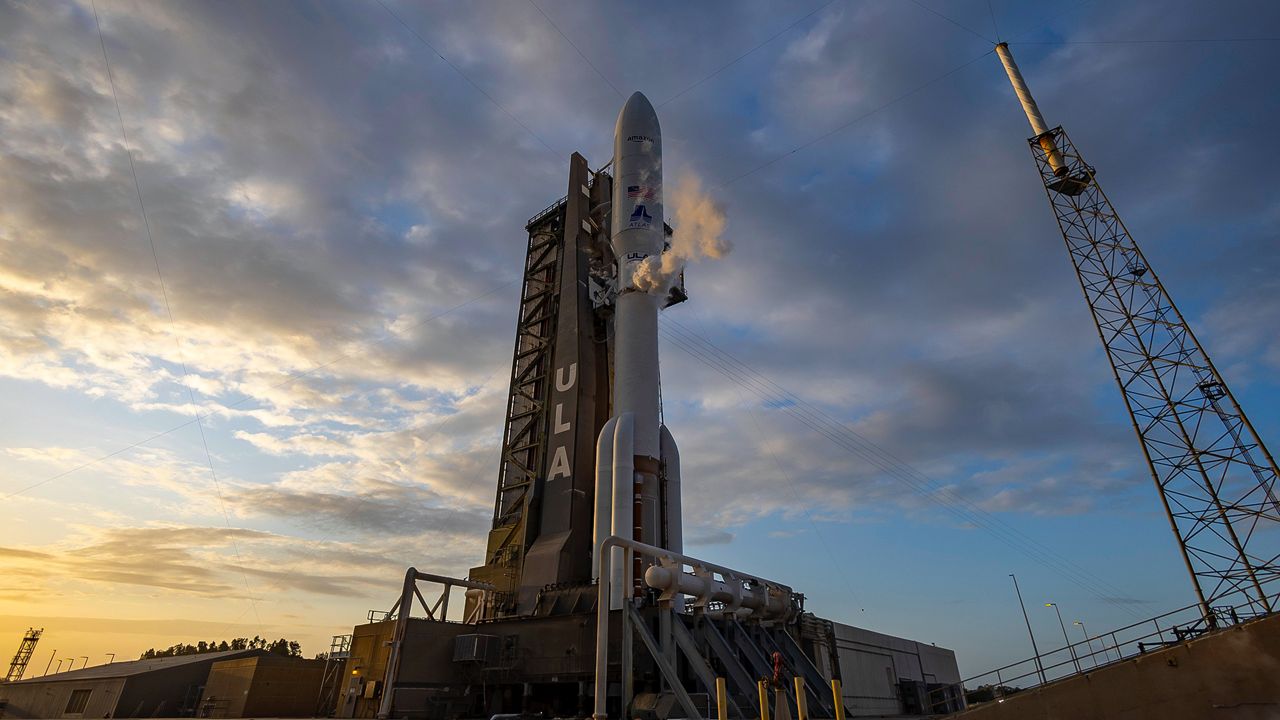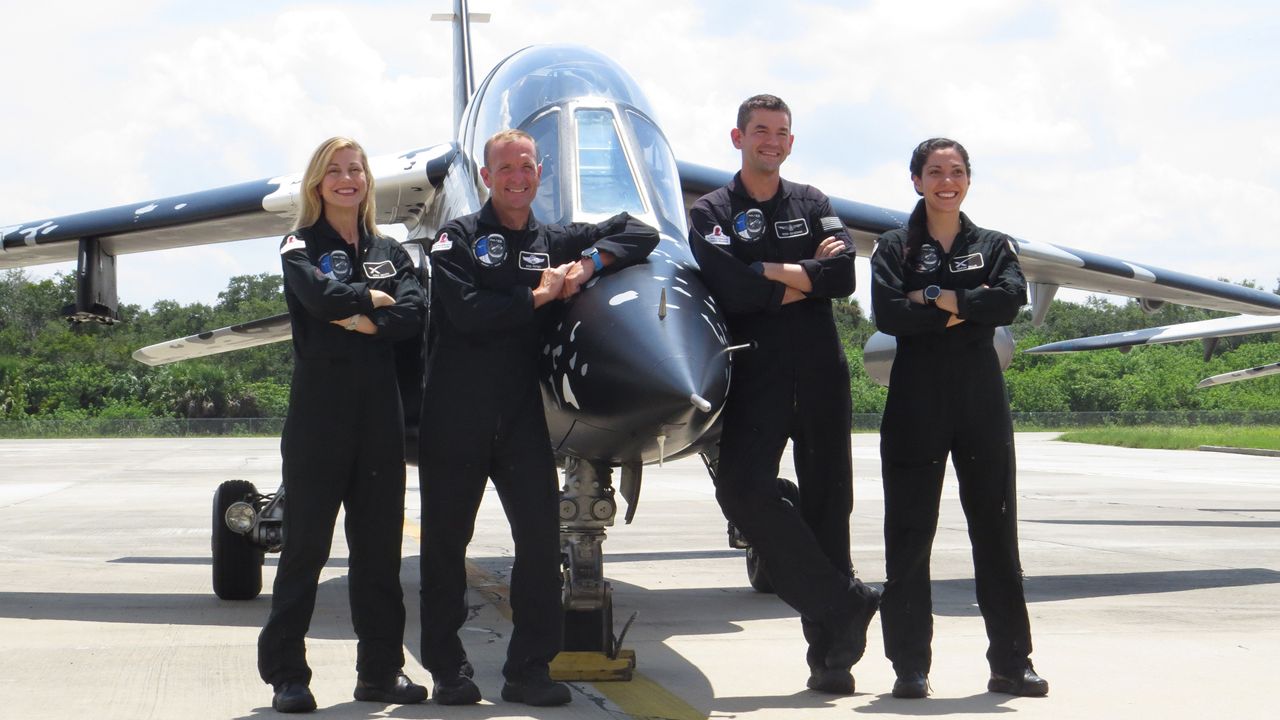BREVARD COUNTY, Fla. — The historic NASA Artemis II launch will see the first crewed mission around the moon in over 50 years — and it couldn’t happen without all the work behind the scenes.
What You Need To Know
- NASA engineers are laying the groundwork for the first crewed mission to the moon in more than 50 years
- Launch Pad 39B is what’s called a “clean pad,” meaning NASA’s mobile launcher will bring rockets like the Artemis mission’s Space Launch System to the pad, and wire in for communications, power and fuel
- NASA is targeting September 2025 for the Artemis II flight, and September 2026 for Artemis III, where astronauts will land on the moon’s south pole
Jesse Berdis is the NASA Deputy Project manager for Mobile Launcher 1 development and the Artemis II Egress System.
He and his team are laying the groundwork for the first crewed mission around the moon in more than 50 years. The last time humans went to the moon was during the Apollo 17 mission in 1972.
Since January 2024, the team of engineers have been working overtime to get Launch Pad 39B at the Kennedy Space Center ready for the historic mission.
“Going through weekends, through storms, all the sort of weather you see at a field in Florida, swampland. So, we have been out here every day making sure this project is done,” Berdis said.
Launch Pad 39B is what’s called a “clean pad,” meaning NASA’s mobile launcher will bring rockets like the Artemis mission’s Space Launch System to the pad, and wire in for communications, power and fuel.
The unique set up allows for other rockets down the road to hook up and liftoff.
“The configuration that we have at the launch pad is very specific around the mobile launcher of where those commodities tie into, so the only requirement for another user’s commodities line up where the pad infrastructure is,” he said.
Astronauts Jeremy Hansen, Victor Glover, Reid Wiseman and Christina Koch are preparing for the Artemis II, which was supposed to launch in 2024, but is now slated for September 2025.
The new egress system has major safety measures in place in case of an emergency during the launch countdown.
The system allows the crew and personnel to exit the Orion capsule or “white room” through the crew access arm — which is a platform installed at the 274-foot level on the mobile launcher tower.
The astronauts would descend more than 1,300 feet inside emergency baskets that are roughly the size of a small SUV and attached to 1,335-foot long cables. The Catenary system of cables is similar to gondolas used for ski lifts, according to NASA.
Each basket can carry up to five people with a max weight of 1,500 lbs. The system will transport the baskets from the mobile launcher to the perimeter of the launch pad, where emergency vehicles will drive the crew safely away.
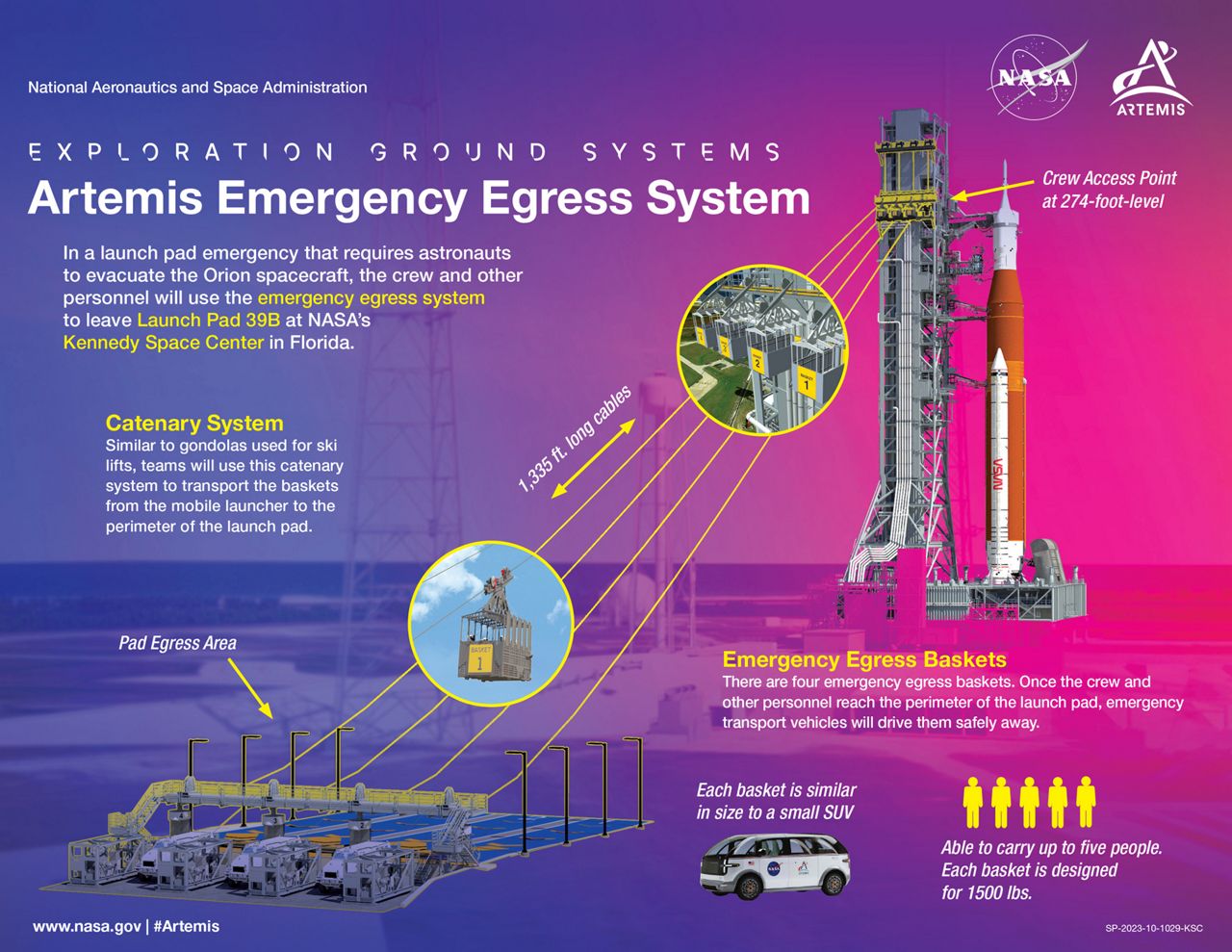
“We can evacuate them as quickly as we can, get them to a safe haven,” Berdis said.
All the preparation is critical to getting NASA to the launch day, where Berdis said he hopes to do off planet in the future — like building a moon base.
“That’s exactly why I’m here, because I want to learn as much as I can from the team, from the experts that are out here. So, I can apply that to the next step, which is the lunar surface,” he said.
NASA is targeting September 2025 for the Artemis II flight, and September 2026 for Artemis III, where astronauts will land on the moon’s south pole.






